Freight Shipping between Thailand and New Zealand | Rates – Transit times – Duties and Taxes
Ever wondered why shipping doesn't sound as entertaining as hopping from Thailand's full moon parties to New Zealand's adrenaline-filled adventures? Because it involves handling complexities like deciphering freight rates and coping with uncertainties about transit times or custom regulations. This guide, however, simplifies these intricate portions of the shipping puzzle. It enlightens you on varieties of freight options – be it air, sea, road or rail –, the mystery of the customs clearance process, obligations related to duties and taxes, and customized advice for businesses eyeing this route. If the process still feels overwhelming, let DocShipper handle it for you! Leveraging their expertise as an international freight forwarder, they transform these logistically layered challenges into success stories, ensuring your international shipping saga becomes as smooth as a Kiwi fruit from New Zealand making its way into Thailand's vibrant markets!
Which are the different modes of transportation between Thailand and New Zealand?
Choosing the right transport mode from Thailand to New Zealand isn't as simple as A-B-C - it's like picking the best route on a treasure map. You see, these two are more than 7,400 miles apart, with the vast Pacific Ocean as their playground. Now, your mightiest giants like air and sea freight rise like superheroes ready for dispatch - each with their unique superpowers. Air freight flies in with speed, while ocean freight sails with cost-effectiveness. So, it's your call, dear shipper - will you go for the Flash's speed or Superman's might? Make your choice your superpower.
Need help with your shipment?
Need assistance with your shipment? Dont hesitate to contact us even for a simple question. Choose the option that suits you
Live chat with an expert Chat on WhatsApp Free Quote 24hHow can Siam Shipping help you

Sea freight between Thailand and New Zealand
Envision a colossal container ship, brimming with goods, slowly sailing from bustling Bangkok to picturesque Auckland. That’s what ocean shipping between Thailand and New Zealand looks like – a vibrant symbol of their robust trade relationship. Two significant seaports, Laem Chabang in Thailand and Ports of Auckland in New Zealand, serve as key connectors for this trade.
Chances are, if you’re dealing with high-volume goods, sea freight is your cost-effective lifesaver. Imagine trading a super-fast sports car for a steady minivan; it’s slower but can surely carry more load!
But, oh boy, isn’t it a maze! Too many businesses and shippers stumble through complications when it comes to shipping between these countries. Missteps can be costly, but don’t worry! It’s like a board game; know the rules (or best practices and specifications) and you’d sail through. Stick around, and you’ll uncover these nuggets of wisdom throughout this guide. Get set to make your sea freight journey a smooth sail!
Main shipping ports in Thailand
Laem Chabang Port
Location and Volume: Situated in Chonburi province, Laem Chabang is Thailand’s largest port and the 20th busiest globally. It processed over 8 million TEU (Twenty-foot Equivalent Unit) in 2019.
Key Trading Partners and Strategic Importance: Laem Chabang Port is a crucial gateway for trade with neighboring Asian countries such as China, Japan, and Singapore. The port has vast strategic importance due to its proximity to the Eastern Economic Corridor (EEC), a significant manufacturing and export zone in Thailand.
Context for Businesses: If you’re looking to access Asian markets or have goods manufactured in the industrial areas of the EEC, Laem Chabang should be a significant consideration in your shipping plan due to its vast facilities and efficient handling.
Port of Bangkok
Location and Volume: The Port of Bangkok is located on the western side of Chao Phraya River, some 30 km from the Gulf of Thailand. It does not have the capacity of Laem Chabang, but it handled about 1.5 million TEU in 2019.
Key Trading Partners and Strategic Importance: Being the closest sea entry point to Thailand’s capital and largest city, Bangkok, this port has direct shipping routes to major ports in Vietnam, Japan, China, and Singapore.
Context for Businesses: If your business involves delivery to or distribution in Bangkok, this port’s location may provide logistical benefits, given its proximity to one of the biggest consumer markets in Thailand.
Map Ta Phut Port
Location and Volume: Located in Rayong province, Map Ta Phut is the largest industrial port in Thailand, designed to handle liquid and gas cargo, with a loading capacity of more than 19,000 DWT (Deadweight Tonnage) per hour.
Key Trading Partners and Strategic Importance: The Port is an integral part of the largest petrochemical industrial estate in Thailand, facilitating direct export to China, Japan, and South Korea.
Main shipping ports in Thailand
Laem Chabang Port
Location and Volume: Situated in Chonburi province, Laem Chabang is Thailand’s largest port and the 20th busiest globally. It processed over 8 million TEU (Twenty-foot Equivalent Unit) in 2019.
Key Trading Partners and Strategic Importance: Laem Chabang Port is a crucial gateway for trade with neighboring Asian countries such as China, Japan, and Singapore. The port has vast strategic importance due to its proximity to the Eastern Economic Corridor (EEC), a significant manufacturing and export zone in Thailand.
Context for Businesses: If you’re looking to access Asian markets or have goods manufactured in the industrial areas of the EEC, Laem Chabang should be a significant consideration in your shipping plan due to its vast facilities and efficient handling.
Port of Bangkok
Location and Volume: The Port of Bangkok is located on the western side of Chao Phraya River, some 30 km from the Gulf of Thailand. It does not have the capacity of Laem Chabang, but it handled about 1.5 million TEU in 2019.
Key Trading Partners and Strategic Importance: Being the closest sea entry point to Thailand’s capital and largest city, Bangkok, this port has direct shipping routes to major ports in Vietnam, Japan, China, and Singapore.
Context for Businesses: If your business involves delivery to or distribution in Bangkok, this port’s location may provide logistical benefits, given its proximity to one of the biggest consumer markets in Thailand.
Map Ta Phut Port
Location and Volume: Located in Rayong province, Map Ta Phut is the largest industrial port in Thailand, designed to handle liquid and gas cargo, with a loading capacity of more than 19,000 DWT (Deadweight Tonnage) per hour.
Key Trading Partners and Strategic Importance: The Port is an integral part of the largest petrochemical industrial estate in Thailand, facilitating direct export to China, Japan, and South Korea.
Main shipping ports in New Zealand
Auckland
Location and Volume: Situated on the north island, Auckland handles approximately 31% of New Zealand’s total annual maritime trade, making it a significant port for international trade. The port handled around 938,000 TEU in the last year.
Key Trading Partners and Strategic Importance: Auckland maintains a strong relationship with trading partners across Asia, particularly China, Japan, and South Korea. The port’s strategic importance lies in its central location and extensive connectivity to domestic and overseas markets.
Context for Businesses: If you’re looking to expand your business within the Asia-Pacific region, consider incorporating the Port of Auckland into your shipping strategy due to its high-volume capacity and strong trade ties with key Asian economies.
Tauranga
Location and Volume: Located in the Bay of Plenty, the Port of Tauranga is New Zealand’s largest port by volume, handling over 1.2 million TEU annually.
Key Trading Partners and Strategic Importance: The port has a diversified portfolio of key trading partners across Asia, Australasia, and America. Due to its high capacity, Tauranga plays a vital role in New Zealand’s trade activities, especially in the export of agricultural products.
Context for Businesses: Businesses planning to export agricultural goods or commodities might benefit from utilizing the Port of Tauranga due to its high throughput and vast export network.
Napier
Location and Volume: Positioned on the east coast of the north island, the Port of Napier handles around 123,000 TEU annually, making it ideally suited for low volume, high-value cargo.
Key Trading Partners and Strategic Importance: Trading predominantly with Asia and the US, the Port of Napier plays a crucial role in the transportation of processed food and wood products.
Context for Businesses: If your business specializes in high-end goods requiring secure, reliable transport, the Port of Napier could be a strategic choice because of its low-volume, high-value focus.
Lyttelton
Location and Volume: The port of Lyttelton, located on the east coast of the south island, handles about 420,000 TEU per year, indicating its mid-range volume capacity.
Key Trading Partners and Strategic Importance: Lyttelton principally trades with Asia and Australia, being crucial for the efficient shipment of coal, timber, and dairy products.
Context for Businesses: Businesses in the coal, timber, and dairy industries may find the Port of Lyttelton efficient and advantageous for trades due to its specialization and strategic location.
Otago
Location and Volume: Situated on the south island’s east coast, the Port of Otago handles approximately 200,000 TEU annually.
Key Trading Partners and Strategic Importance: Asia and Australia are the port’s main trading partners. Otago is pivotal for the region’s economy, specifically in facilitating the exportation of agricultural and forestry products.
Context for Businesses: Companies dealing in agricultural and forestry products intending to penetrate Asian and Australian markets may consider the Port of Otago as a strategic trade gateway.
Nelson
Location and Volume: Located on the north of the South Island, the Port of Nelson operates at a lower freight volume, handling around 62,500 TEU per year.
Key Trading Partners and Strategic Importance: Nelson maintains consistent trade relations primarily with Australasian, American, and Asian economies. It’s particularly known for facilitating the export of seafood and forestry products.
Context for Businesses: If your enterprise is engaged in the seafood or forestry sectors, aiming to trade with American, Australian, or Asian nations, the Port of Nelson might serve as a valuable logistic hub due to its low volume handling and niche expertise.
Should I choose FCL or LCL when shipping between Thailand and New Zealand?
Shipping goods from Thailand to New Zealand? You’ll need to pick between Full Container Load (FCL) and Less than Container Load (LCL), also known as consolidation. This is no small decision. Your choice here swings the pendulum on your costs, delivery times, and overall shipping success. So, let’s dive deep and unravel the ins and outs of FCL and LCL shipping, helping you stay savvy and make an informed decision that fits neatly into your shipping puzzle.
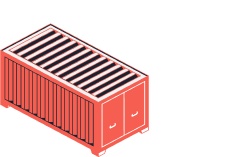
Full container load (FCL)
Definition: FCL, or Full Container Load, refers to the use of an entire container for your shipment. This is a method under ocean freight known as 'FCL shipping'. When to Use: Opt for FCL when your cargo is more substantial - typically more than 13/14/15 cubic meters (CBM). It tends to be economical for high volume shipments and offers safety due to the container being sealed from origin to destination. Example: Let's assume you're shipping furniture. Given their size and the potential for several items, you'll likely fill an entire container - either a 20’ft or a 40’ft FCL container. FCL ensures your furniture is transported securely without mixing with other goods. Cost Implications: While FCL sounds costly due to the use of a whole container, high volume shipments make this option less pricey per unit. An FCL shipping quote accounts for the exclusive use of the container, meaning you absorb the whole cost, undercutting the per-unit cost for high volume freight. However, if you can't fill the entire container, you're still paying for unused space, making it less efficient.
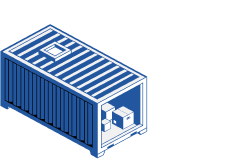
Less container load (LCL)
Definition:
LCL (Less than Container Load) Shipping is a type of freight forwarding where businesses consolidate their cargo with others' in the same container. It's a cost-efficient and flexible option for low-volume shipments.
When to Use:
LCL is the preferred choice when your cargo volume is less than 15 cubic meters (CBM). Since you're sharing container space, you don't need to wait until you have enough goods to fill an entire container yourself.
Example:
Consider a Thai handicraft exporter sending a variety of decorative items to a boutique shop in New Zealand. The shipment only amounts to 10 CBM, too small for a full container. Using LCL, they can still promptly send their goods without incurring excessive shipping costs.
Cost Implications:
While LCL tends to be more expensive per CBM than full container shipping, it's more affordable overall for smaller capacities as you're only paying for the space you use. In addition, LCL freight gives you greater control to manage your inventory and cash flow as you can ship goods based on demand, not on container capacity.
Hassle-free shipping
Discover the trusted services of DocShipper, your dedicated freight forwarder aimed at simplifying cargo shipping for businesses. Our ocean freight experts stand ready to advise on the most appropriate shipping method between Thailand and New Zealand, considering volume, speed, and costs. Let us help you decide between consolidation and a full container, always working towards your business objectives. Take the first step towards a stress-free shipping experience – contact us for a free estimation today.
How long does sea freight take between Thailand and New Zealand?
Sea freights travelling between Thailand and New Zealand, on average, take between 15 to 35 days. This estimation takes into consideration certain factors such as the ports used, the weight and nature of the goods being transported. For a more accurate quote that’s tailored to your specific requirements, we recommend contacting a freight forwarder like DocShipper.
Below, please find a text-only table representing the average transit times in days when shipping via sea freight between the main freight ports of the two nations:
Main Freight Ports in Thailand Main Freight Ports in New Zealand Average Transit times in Days Laem Chabang Auckland 30 Bangkok Tauranga 30-35 Map Ta Phut Lyttelton 36-38 Songkhla Wellington 22*Please note, these are just averages and actual times can vary. For the most accurate quote, please reach out to a professional freight forwarder.
How much does it cost to ship a container between Thailand and New Zealand?
Decoding ocean freight rates isn’t a simple task, especially when estimating the shipping cost between Thailand and New Zealand. A myriad of factors – everything from the Point of Loading and Destination, carrier selection, right down to the nature of goods and market fluctuations each month- make it impossible to give a one-size-fits-all price. What you can expect is a range, possibly as broad as $15-$60 per CBM. Remember, this is an estimated range, not a static figure. Our dedicated team of shipping specialists is on deck to work with you, ensuring you get a customized and competitive quote that resonates specifically with your shipment needs.
Special transportation services
Out of Gauge (OOG) Container
Definition: An OOG container is a unique shipping option that caters to oversized items, larger than the standard container dimensions. These types of containers are ideal for out-of-gauge cargo that doesn’t fit into standard containers due to excess weight or extended dimensions. Suitable for: These containers are specifically designed to carry and ensure safe transportation for heavy machinery, large equipment, and oversized cargo. Examples: Construction equipment, industrial machinery, large automotive parts, and windmill wings all fall under this category. Why it might be the best choice for you: Choose OOG containers if you’re dealing with items that are too large or heavy for standard containers. They provide the flexibility needed to handle your exceptional load.
Break Bulk
Definition: Break Bulk refers to the shipment of cargo as separate pieces, rather than being loaded into containers. It uses specialized cranes and handling equipment for loading and unloading. Suitable for: Break Bulk shipping addresses logistics needs of companies dealing with loose cargo loads, chunky goods, or items that are typically not put in containers. Examples: Timber, construction components, or large machinery are typically shipped by Break Bulk. Why it might be the best choice for you: If your business needs to ship items that are cumbersome or irregularly shaped, break bulk could be the ideal method for you.
Dry Bulk
Definition: Dry Bulk cargo refers to loose goods that are dry and can typically be poured. These goods are loaded directly into the vessel’s cargo holds. Suitable for: Commodities transported include grains, coal, steel, and other granular products. Examples: Business involved in grain exportation, coal mining, or transporting construction materials often utilize this mode of shipping. Why it might be the best choice for you: Choose Dry Bulk if you have large volumes of bulk cargo that can be poured such as grains, coal, or cement.
Roll-on/Roll-off (Ro-Ro)
Definition: Roll-on/Roll-off, or Ro-Ro, is a method of sea freight where wheeled cargo is driven on and off a ro-ro vessel. Suitable for: Any vehicles or machinery that can be rolled on and off the vessel. Examples: Automobiles, trucks, semis, trailers, cranes, motorhomes, and even railway carriages can be transported via Ro-Ro. Why it might be the best choice for you: If your cargo comes on wheels, Ro-Ro is a safe, efficient, and affordable way to get it overseas.
Reefer Containers
Definition: Reefer Containers are refrigerated containers used to transport temperature-sensitive cargo. Suitable for: Perishable goods like dairy, seafood, vegetables, fruits, meat, or medical supplies such as vaccines. Examples: Export of fresh produce from Thailand to New Zealand is a common application. Why it might be the best choice for you: If your cargo needs to stay cool during the journey, opting for reefer containers can guarantee your goods remain fresh and unspoiled.
Whether you’re shipping a fleet of cars or a load of fresh produce, understanding your options can lead to more efficient and cost-effective solutions. Here at DocShipper, we know international shipping can be complex. Don’t navigate these waters alone. Contact us and get a free shipping quote in less than 24h for your specific needs.

Air freight between Thailand and New Zealand
When it comes to shipping small, valuable cargo between the sensational shores of Thailand and the stunning landscapes of New Zealand, air freight is your ultimate ally. Offering unmatched speed and reliability, it ensures your high-tech electronics or designer jewelry reach their destination swiftly and safely.
However, many merchants get tangled up in rough air pockets when it comes to air freight. Missteps in estimating shipping costs, like using the wrong weight formula, can make your pockets lighter than the air your goods are traveling on. Not knowing the best practices, like optimizing packaging, is like flying blind through a thunderstorm — it’s risky and can rack up costs. In this part, we will equip you with the right compass to dodge these common errors, ensuring that your air freight experience feels as smooth as a calm sky after a storm.




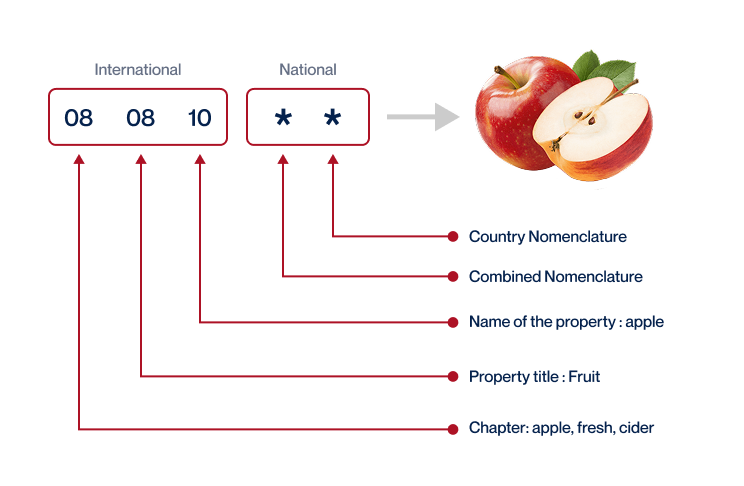
Contact Details for Customs Authorities
Thailand Customs

Official name: The Customs Department of Kingdom of Thailand. Official website: www.customs.go.th.
New Zealand Customs
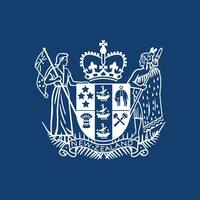
Official name: New Zealand Customs Service Official website: https://www.customs.govt.nz/
Get Started with Siam Shipping
Your first steps with Siam Shipping
Additional logistics services
Warehousing
Finding the right warehouse in Thailand or New Zealand can feel like a maze, especially if your cargo needs a special climate. Imagine, you're shipping Thai silk or Kiwi wines - you'd need specific temperature controls, right? Fear those icy problems no more! Check out our comprehensive warehousing solutions, customized for your goods. Ready to learn more? Dive in here.
Packing
Secure packaging is your ticket to safe shipping from Thailand to New Zealand. It's crucial to have a reliable partner for tailoring services to your product's needs - be it delicate ceramics or robust machinery. Picture no breakages on arrival, thanks to expert repackaging. Imagine that, a seamless transport experience! For the inside scoop, check out our dedicated page: Freight packaging.

Transport Insurance
Cargo insurance is a lifesaver for your shipments, unlike just fire insurance. It protects your goods from various potential dangers, not only fire, during the shipping process. Imagine a storm hits sea transport - your Thailand-New Zealand trade shouldn't bear the brunt! Ensure it doesn't by opting for cargo insurance. Want to delve deeper? More info on our dedicated page: Cargo Insurance.
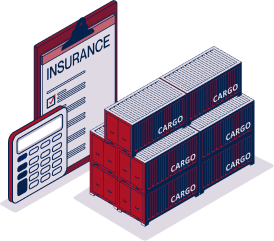
Household goods shipping
When moving between Thailand and New Zealand, trusting your delicate or oversized goods with us means peace of mind. With years of experience, our team can pack, transport, and unpack your items, ensuring their safe arrival at your new home. Faced with a grand piano or a precious vintage wine collection? We've got it covered! More info on our dedicated page: Shipping Personal Belongings.
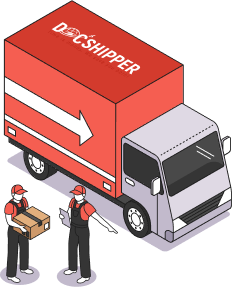
Procurement in Thailand
Introducing goods from Thailand to New Zealand? With DocShipper's Supplier Management, we'll source and handle your procurement in Asia and Eastern Europe, overcoming language obstacles along the way. Imagine us as your compass throughout this process, guiding you towards reliable suppliers. You focus on the market, we'll focus on bringing your products on board! For a deeper dive, check out our dedicated page: Sourcing services.

Quality Control
When shipping from Thailand to New Zealand, you don't want surprises. That's why quality inspections before dispatch are game-changers. Imagine 2000 faulty lamps reaching Auckland – a crisis, right? Our inspections ensure every shipment meets NZ standards, saving you stress and cost! Dig deeper into how our Quality Control process helps you sidestep such hassles on our dedicated page: Quality Inspection.

Conformité des produits aux normes
Shipping between countries becomes a breeze when your products meet local regulations, saving you from legal hassles. Our Product Compliance Services can do just that--conduct tests in authorized labs, bag you certifications, and ensure your shipment's smooth journey. See how useful it can be? Jump in for more details on our dedicated page: Product Compliance Services.





